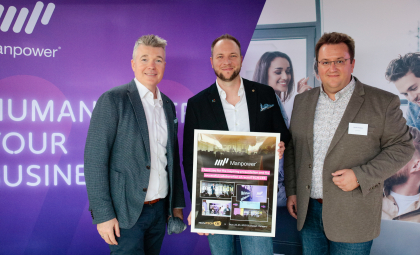
Where are all the candidates gone?
This year has revealed the extent of restructuring and fluctuation occurring in the labor market. Through the HR sector, it's clearly visible that particularly in shortage professions, the employer-candidate relationship dynamics have significantly transformed. Today, it's the candidate who leads this dance – and while this is becoming increasingly obvious, many employers and clients still don't understand how convincing, fair, and attractive they need to be to secure workers with the right skills. Without fundamental changes in employer attitudes and compensation systems, posted job openings will continue to remain in the overlooked zone.
In the era of digitalization and online connectivity, there are increasingly more platforms and forums where current or former employees share their subjective impressions about employers with remarkable clarity. How layoffs are handled, flexible work opportunities, overtime levels, office atmosphere, approach to diversity, or evaluation of advancement opportunities function as a kind of litmus test for prospective employees.
It's particularly noteworthy that most companies still don't publish salary ranges and benefit packages for positions – even though this is one of the most important pieces of information candidates need to make informed decisions. Transparent salary communication not only speeds up the selection process but also significantly improves the quality of applicants.
The large number of job postings and open positions increasingly makes candidates aware: they have the right to be selective. Unlike the pre-pandemic period, today it no longer carries existential risk if an employee doesn't accept an offer. Professionals with competitive skills – especially on online platforms like LinkedIn – receive new inquiries daily. Remote work, flexible scheduling, and online interviewing further strengthen accessibility.
Meanwhile, recruiters – increasingly desperately – are working to fill positions that were put on hold at the beginning of the pandemic when the global economy froze. Fintech and technology companies, along with their HR departments, are in continuous recruitment cycles: increased workload, development plans, and the extremely competitive labor market force them into this. Thanks to this, these companies have also recognized the strategic importance of employer branding, remote and flexible work, learning and development opportunities, transparent salary ranges, and recognition culture.
Many of them – while waiting for suitable candidates – are further developing existing employees to handle new types of tasks. Even global corporations – such as Google, Amazon, or the Bank of England – have modified their plans and enabled various forms of remote work to retain key personnel who were on the verge of layoffs.
New regulatory frameworks governing remote work and pandemic-related health measures further strengthen arguments for providing the widest possible range of flexible work arrangements – where the nature of the job allows it.
Additionally, it's becoming increasingly clear that the shortage of quality workforce requires proactive skill development and internal succession training processes from companies. If nothing else, based on the experiences of the pandemic and isolated work, we can state: the era of vertical micromanagement is over. The demand for employee confidence and autonomy is growing, and companies must keep pace with this new labor market reality.



